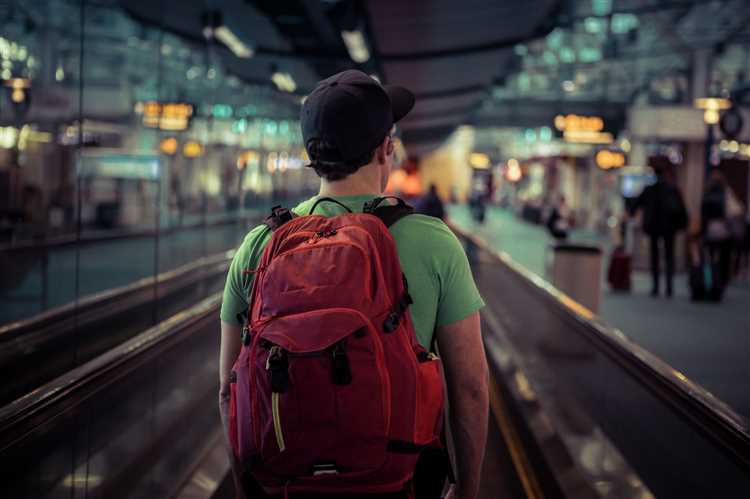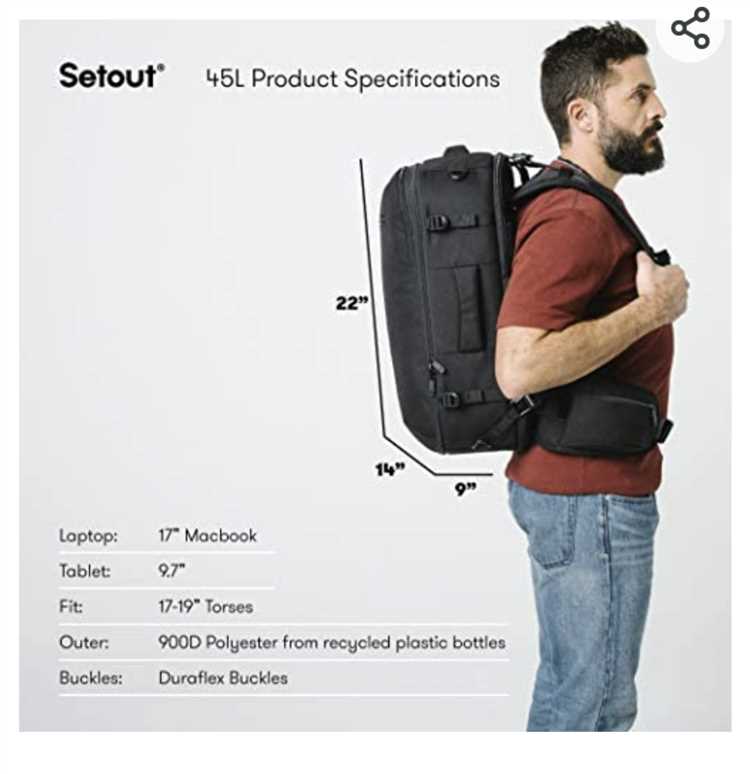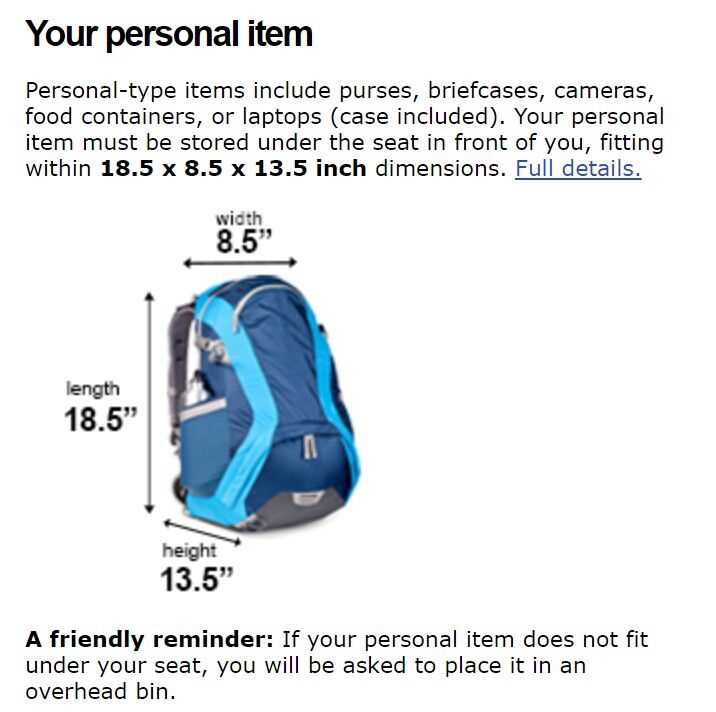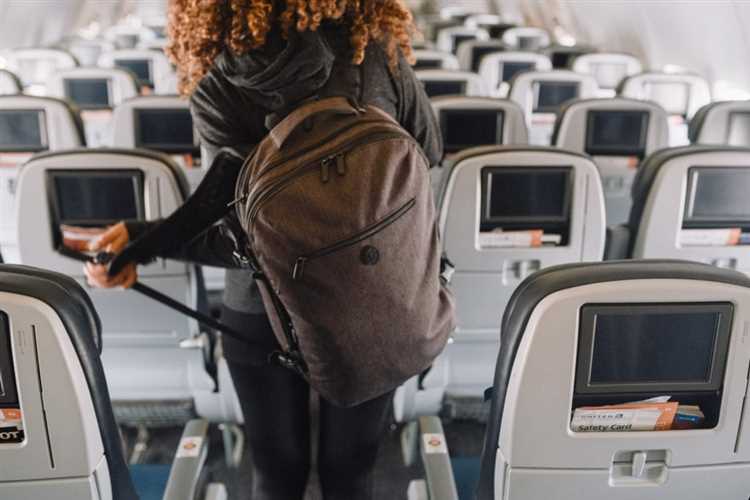
A backpack is a versatile and convenient accessory that people use for various purposes. Whether you are a student, a traveler, or just someone who enjoys carrying their essentials in a hands-free manner, a backpack can be an essential part of your daily life. However, when it comes to traveling, especially by air, there is often confusion about whether a backpack is considered a personal item or not.
First and foremost, it is important to understand what is meant by a personal item. Most airlines have specific guidelines regarding the size and weight of personal items that passengers can bring on board. Personal items are generally smaller than carry-on luggage and can include items such as purses, laptop bags, briefcases, and small backpacks.
So, is a backpack considered a personal item? The answer may depend on the size and dimensions of the backpack. Typically, if your backpack is small enough to fit under the seat in front of you, it is likely to be considered a personal item. However, if your backpack is larger and cannot fit under the seat, it may be considered as carry-on luggage and could be subject to additional fees or restrictions.
- Definition of a personal item
- Characteristics of a personal item
- Examples of personal items
- Characteristics of a backpack
- 1. Size and Capacity
- 2. Compartments and Organization
- 3. Straps and Support
- Airlines’ policies on personal items
- Size and weight restrictions
- Types of personal items
- Travelers’ experiences with backpacks as personal items
- Tips for using a backpack as a personal item
- Choose the right size
- Utilize compartments and organizers
- Q&A,
- Is a backpack considered a personal item?
- Can I bring a backpack as a personal item on an airplane?
- Do I have to pay an additional fee if I bring a backpack as a personal item?
- What size backpack can be considered a personal item?
- Can I bring a backpack as a personal item and another bag as a carry-on?
- Can I bring a backpack on a plane as a personal item?
- Is a backpack considered a personal item for train travel?
Definition of a personal item

A personal item refers to a small bag or item that is typically carried by a passenger alongside their carry-on luggage. It is a piece of personal belonging that can be taken aboard an airplane or brought into a public space.
Characteristics of a personal item
- Size: A personal item is usually smaller in size compared to a carry-on bag. It is designed to fit under the seat in front of the passenger.
- Portability: A personal item should be easy to carry and transport. It is often lightweight and has a comfortable strap or handle for easy maneuverability.
- Accessibility: Unlike a carry-on bag, a personal item should be easily accessible during travel. It is intended to hold essential items that a passenger may need during the journey, such as a laptop, tablet, or personal documents.
Examples of personal items
There are various items that can be considered personal items when traveling:
- A backpack or small duffel bag
- A laptop or tablet bag
- A purse or handbag
- A briefcase
- A camera bag
- A diaper bag
These are just a few examples, and the classification of an item as a personal item may vary depending on the specific travel regulations of airlines or transportation providers.
In summary, a personal item is a small, commonly used bag or item that a passenger can bring alongside their carry-on luggage. Its purpose is to hold personal belongings that can be easily accessed during travel. It is important to check the specific guidelines of airlines or transportation providers to determine which items are considered personal items.
Characteristics of a backpack

A backpack is a popular type of bag that is designed to be carried on one’s back. It is often made of durable materials such as nylon or canvas to withstand the weight and daily wear and tear it may encounter. Here are some key characteristics of a backpack:
1. Size and Capacity
Backpacks come in various sizes and capacities to accommodate different needs. They can range from small daypacks used for short trips or everyday use to large backpacks designed for hiking or traveling. The capacity of a backpack is usually measured in liters and indicates how much you can fit inside it.
2. Compartments and Organization
A good backpack will have multiple compartments and pockets to help organize and separate your belongings. This allows for better packing and easier access to your items when you need them. Common compartments include a main compartment, front pockets, side pockets, and often additional pockets inside for smaller items like keys or pens.
It is worth noting that some backpacks may also have specialized compartments or features to accommodate specific activities, such as a laptop sleeve for carrying a laptop or a hydration reservoir for carrying water during outdoor activities.
3. Straps and Support
Backpacks typically have two shoulder straps that allow you to carry the weight evenly on both shoulders, which can be more comfortable and help prevent strain on your back. In addition to the shoulder straps, backpacks often have a chest strap and a waist belt to further distribute the weight and provide extra support.
These additional straps can help stabilize the backpack and prevent it from shifting while you are walking or hiking, reducing the strain on your shoulders and improving overall comfort.
In conclusion, a backpack is a versatile and practical bag that offers several characteristics such as size and capacity options, multiple compartments for organization, and straps for support. Whether you are heading to school, going on a hike, or traveling, a backpack can be a reliable and convenient personal item.
Airlines’ policies on personal items

When it comes to traveling by air, understanding an airline’s policies on personal items is essential to avoid any unpleasant surprises or additional fees. Each airline may have slightly different guidelines, but there are some common rules that most airlines follow.
Size and weight restrictions
Most airlines allow passengers to bring a personal item on board along with their carry-on luggage. However, there are usually size and weight restrictions for personal items to ensure they fit under the seat in front of you. Common dimensions for personal items are around 18 x 14 x 8 inches (45 x 35 x 20 cm), but it’s best to check with your specific airline for their exact requirements.
Additionally, airlines may have weight restrictions for personal items, usually ranging from 15 to 20 pounds (7 to 9 kilograms). Exceeding these limits may result in having to check in your personal item or pay extra fees.
Types of personal items
A personal item is typically defined as a small bag or backpack that can fit under the seat. Common examples include a purse, small laptop bag, briefcase, or backpack. However, some airlines may have specific restrictions on the types of items allowed, so it’s important to review the policy beforehand.
It’s worth noting that some airlines also include additional items as personal items, such as a coat or umbrella. Again, it’s best to check with your specific airline to understand their specific guidelines.
Overall, it’s important to familiarize yourself with the airline’s policies on personal items before your flight to ensure a smooth and hassle-free travel experience. By understanding the size, weight, and types of personal items allowed, you can plan accordingly and avoid any last-minute surprises.
Travelers’ experiences with backpacks as personal items
For many travelers, backpacks are an essential piece of equipment. They provide a convenient and hands-free way to carry all the necessary items for a trip, from clothes and toiletries to electronics and travel documents. However, when it comes to whether a backpack is considered a personal item or a carry-on item, opinions vary.
Some travelers have shared their experiences of successfully using backpacks as personal items. They mention that airlines often allow backpacks in addition to a carry-on bag, as long as the backpack fits under the seat in front of you. This can be a great space-saving solution, especially for those who prefer not to check in their bags.
Others have had mixed experiences with backpacks as personal items. They point out that some airlines have very strict rules regarding the size and weight of personal items, and backpacks may exceed these limits. In such cases, travelers may be required to either check in the backpack or pay an additional fee.
Some travelers have shared tips for maximizing the chances of a backpack being accepted as a personal item. These include choosing a smaller-sized backpack, packing it in a way that allows it to compress easily, and removing any unnecessary items to reduce its weight. Additionally, some suggest contacting the airline in advance to inquire about their specific policies on backpacks as personal items.
Overall, it appears that whether a backpack is considered a personal item largely depends on the airline and its policies. Travelers are advised to familiarize themselves with the rules and regulations of the airlines they plan to fly with, to avoid any surprises or extra fees.
Tips for using a backpack as a personal item
When it comes to traveling, using a backpack as a personal item is a great way to maximize space and keep your belongings organized. Here are some tips to help you make the most of using a backpack as your personal item:
Choose the right size
It’s important to choose a backpack that meets the size restrictions for a personal item. Airlines typically have specific dimensions for personal items, so make sure your backpack fits within these limits. Additionally, consider the length of your trip and choose a backpack that can comfortably hold all of your essentials.
Utilize compartments and organizers
Many backpacks come with built-in compartments and organizers, which can help you stay organized while on the go. Use these compartments to store different items such as electronics, toiletries, and clothing. This will not only keep your backpack neat, but also make it easier to find what you need.
Pack smart
When using a backpack as a personal item, it’s important to pack smart. Roll your clothes instead of folding them to save space and prevent wrinkles. Place heavier items at the bottom of the backpack to distribute the weight evenly. Use packing cubes or compression bags to further maximize space.
Be mindful of weight restrictions
While a backpack may provide more space than a smaller personal item, it’s important to be mindful of weight restrictions. Airlines often have weight limits for both carry-on luggage and personal items, so make sure you know and adhere to these restrictions to avoid any additional fees.
By following these tips, you can effectively use a backpack as a personal item and make your travels more convenient and organized. Happy journey!
Q&A,
Is a backpack considered a personal item?
Yes, a backpack is typically considered a personal item.
Can I bring a backpack as a personal item on an airplane?
In most cases, you can bring a backpack as a personal item on an airplane. However, it may depend on the airline’s specific rules and regulations. It’s always best to check with the airline beforehand.
Do I have to pay an additional fee if I bring a backpack as a personal item?
In many cases, bringing a backpack as a personal item does not incur an additional fee. However, some airlines may have restrictions or charge fees for larger or heavier backpacks. It’s important to check with the specific airline to confirm their policies.
What size backpack can be considered a personal item?
The size of a backpack that can be considered a personal item may vary depending on the airline. Generally, it should be small enough to fit under the seat in front of you. The maximum dimensions typically allowed are around 18 x 14 x 8 inches (45 x 35 x 20 cm), but it’s always best to check with the airline for their specific size limits.
Can I bring a backpack as a personal item and another bag as a carry-on?
Yes, in many cases you can bring a backpack as a personal item and another bag as a carry-on. The personal item, such as a backpack, would typically need to be smaller and fit under the seat in front of you, while the carry-on bag can be larger and stored in the overhead bin. However, it’s important to check with the airline for their specific policies regarding personal items and carry-on bags.
Can I bring a backpack on a plane as a personal item?
Yes, you can bring a backpack on a plane as a personal item. Most airlines allow passengers to bring one personal item, such as a backpack, in addition to their carry-on luggage. However, it is important to check the specific size and weight restrictions of the airline you are flying with, as these can vary.
Is a backpack considered a personal item for train travel?
In many cases, a backpack is considered a personal item for train travel. However, it is always a good idea to check with the specific train company or agency you are traveling with to confirm their policies. Some train companies may have size restrictions or limitations on the number of personal items allowed per passenger.